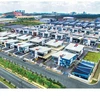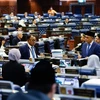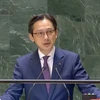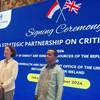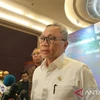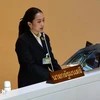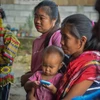The Indonesian Government is effectively carrying out an ambitious programme in a bid to reduce unemployment rate, boost the nation’s economic growth and narrow the development gap between regions.
The Master Plan for Acceleration and Expansion of Indonesia’s Economic Development (MP3EI), which was launched from May 2011 as a strategic breakthrough, was designed as part of the agenda for "development for all."
The MP3EI projects are geographically divided into six economic corridors, including the corridors of Sumatra, Kalimantan, Java, Sulawesi, Bali-Nusa Tenggara, and Papua-Maluku.
Sumatra is being designated as a centre for agriculture and energy, Java for industries and services, Kalimantan for mining and energy, Sulawesi and North Maluku for agriculture and fisheries, Bali and East and West Nusa Tenggara for tourism and supporting national food self-sufficiency, and Papua and Maluku for natural and human resources.
Indonesian President Susilo Bambang Yudhoyono recently expressed his satisfaction over the effective implementation of the programme. Since it was launched over two years ago, at least 259 projects have begun, with a total investment of 737.9 trillion Rp (around 66.4 billion USD).
The president was quoted as saying that the projects are becoming a reality thanks to cooperation among the central government, local administrations and business community.
One of the priorities in the MP3EI projects is the development of infrastructure, as the government wants to improve the connectivity of the archipelago nation which consists of over 17,000 islands.
It is estimated that Indonesia needs 4,800 trillion Rp in funds to improve the country’s basic infrastructures, based upon the medium-term development plan for the 2015-2019 period.-VNA
The Master Plan for Acceleration and Expansion of Indonesia’s Economic Development (MP3EI), which was launched from May 2011 as a strategic breakthrough, was designed as part of the agenda for "development for all."
The MP3EI projects are geographically divided into six economic corridors, including the corridors of Sumatra, Kalimantan, Java, Sulawesi, Bali-Nusa Tenggara, and Papua-Maluku.
Sumatra is being designated as a centre for agriculture and energy, Java for industries and services, Kalimantan for mining and energy, Sulawesi and North Maluku for agriculture and fisheries, Bali and East and West Nusa Tenggara for tourism and supporting national food self-sufficiency, and Papua and Maluku for natural and human resources.
Indonesian President Susilo Bambang Yudhoyono recently expressed his satisfaction over the effective implementation of the programme. Since it was launched over two years ago, at least 259 projects have begun, with a total investment of 737.9 trillion Rp (around 66.4 billion USD).
The president was quoted as saying that the projects are becoming a reality thanks to cooperation among the central government, local administrations and business community.
One of the priorities in the MP3EI projects is the development of infrastructure, as the government wants to improve the connectivity of the archipelago nation which consists of over 17,000 islands.
It is estimated that Indonesia needs 4,800 trillion Rp in funds to improve the country’s basic infrastructures, based upon the medium-term development plan for the 2015-2019 period.-VNA






